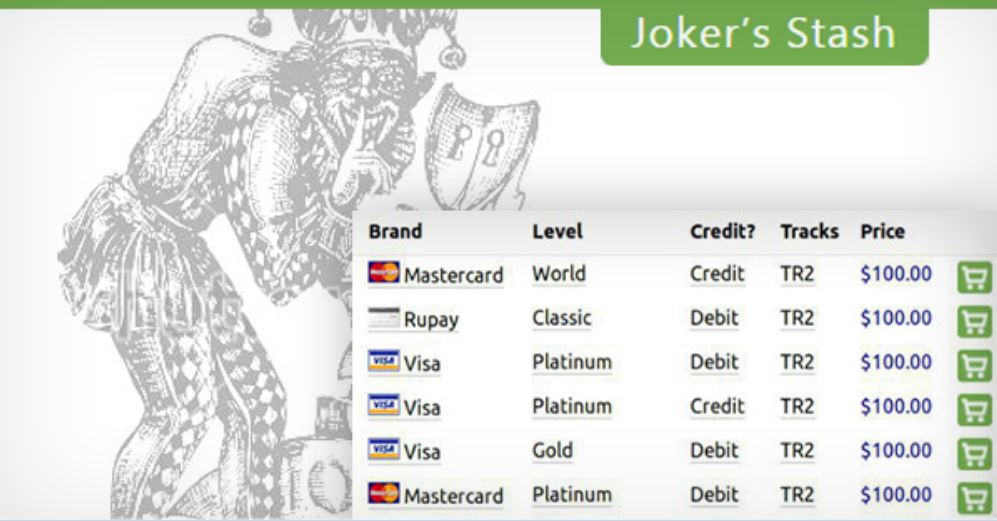In a move that rocked the cybercriminal underworld, JokerStash, the dark web’s most notorious marketplace for stolen credit card data, announced it was shutting down. With a simple farewell post and a 30-day countdown, the platform's mysterious administrator walked away from what was once a digital empire of fraud. JokerStash’s sudden disappearance left hackers scrambling, cybersecurity experts speculating, and law enforcement watching closely.
So why did the internet’s biggest carding platform disappear? The answer lies in a combination of pressure, timing, and the complex lifecycle of cybercrime operations.
The Rise of JokerStash
JokerStash, also known as Joker’s Stash, began operations in 2014. It quickly carved a name for itself in the world of cybercrime, offering a one-stop shop for carders—individuals who use stolen credit card data to commit fraud. Unlike smaller, scam-prone forums, jokerstash built its reputation on reliability, anonymity, and regular updates of fresh stolen data.
The platform didn’t just host stolen credit card numbers. It sold full identity packages including names, addresses, phone numbers, social security numbers, and banking credentials. Much of this information was obtained through data breaches, phishing campaigns, and point-of-sale (POS) malware. JokerStash made this information accessible to buyers worldwide, accepting cryptocurrency for near-anonymous transactions.
At its peak, the marketplace reportedly generated millions of dollars in annual revenue. It became a central hub for cybercriminals seeking fast, low-risk access to valuable financial data.
A Marketplace Like No Other
What set JokerStash apart from other carding forums wasn’t just scale—it was structure and service. The marketplace operated across several darknet addresses and relied on blockchain-based DNS systems to evade domain seizures. It used encryption for user communication, allowed feedback and vendor ratings, and even had customer support for dispute resolution.
Its frequent “dumps”—massive uploads of stolen data—became infamous in cybersecurity circles. JokerStash often labeled dumps with catchy names like “Texas Flood” or “Bourbon Express,” taunting victims and investigators alike.
These tactics, while provocative, were part of a carefully crafted persona. JokerStash wasn’t just a website; it was a brand. And like all brands, it eventually faced decline.
The Sudden Shutdown
In January 2021, JokerStash’s admin posted an unexpected message: the marketplace would shut down permanently within 30 days. There was no drama, no threats—just a farewell. The admin claimed to be retiring, stating, “We are getting a deserved retirement. Joker goes on a well-deserved rest.”
The shutdown triggered a final rush of activity. Cybercriminals hurried to complete transactions, withdraw balances, and download as much data as possible. For many, JokerStash was a primary source of income. Its disappearance created both panic and opportunity across the underground market.
The admin warned users not to trust any imposters claiming to revive the forum—a move likely intended to protect the brand's legacy and deter scammers from exploiting the name.
Why Did JokerStash Shut Down?
While the “retirement” explanation may be partially true, there are deeper forces at play. Experts suggest several possible reasons for the closure:
1. Law Enforcement Heat
JokerStash had been under the microscope for years. Cybersecurity firms and global law enforcement agencies had been tracking its activity and collecting intelligence. Although no public takedown was announced, it’s possible the admin received credible threats or knew time was running out.
2. Declining Operations
In its final months, JokerStash began to show signs of trouble. Customers reported inaccurate data, delayed support, and decreased dump quality. Internal issues, staffing problems, or data shortages could have made it difficult to maintain the platform’s high-volume standards.
3. Health Concerns
Interestingly, in late 2020, rumors surfaced that the JokerStash admin had contracted COVID-19, possibly suffering from complications that impacted their ability—or desire—to continue managing the site.
4. Exit Strategy
Darknet operators don’t usually stick around forever. Most marketplaces have an expiration date. JokerStash’s exit may have been a carefully planned strategy to retire while ahead, avoid arrests, and leave with a clean exit—an increasingly rare feat in cybercrime.
Aftermath and Ripple Effects
The closure of JokerStash left a massive void in the cybercrime ecosystem. Smaller marketplaces scrambled to absorb the displaced users, but few had the infrastructure, reputation, or user trust to match its scale.
Some of the leading successors include:
- UniCC
- Brian’s Club
- Ferum Shop
However, each faces the same challenges that JokerStash did: law enforcement pressure, internal trust issues, and technical vulnerabilities.
On the law enforcement side, agencies celebrated the news. Even without a formal takedown, JokerStash's closure disrupted one of the largest pipelines for stolen financial data. But experts warn: cybercrime is highly resilient. The fall of one platform often leads to the rise of two more.
What Businesses and Consumers Should Know
For businesses, the end of JokerStash is a reminder that data breaches have real, lasting consequences. Even when a major marketplace closes, the stolen data lives on, often circulating for years.
To stay protected:
- Regularly monitor for data exposure on the dark web
- Enforce strong password policies and two-factor authentication
- Train employees on phishing and social engineering tactics
- Secure POS systems and update software regularly
Consumers, too, must remain vigilant. If JokerStash ever handled your stolen data, it may still be out there. Watch for unauthorized charges, set up transaction alerts, and consider credit monitoring services.
Conclusion
The JokerStash exit marks the end of a major chapter in dark web history. Its quiet farewell stands in contrast to its loud and chaotic legacy. For years, it fueled a global fraud economy and left victims in its wake. Now, as the curtain falls, the cybercriminal world looks to the future, searching for the next big platform.
But for those watching from the outside—businesses, cybersecurity teams, and consumers alike—the message is clear: the game has changed, but it’s far from over.





Comments